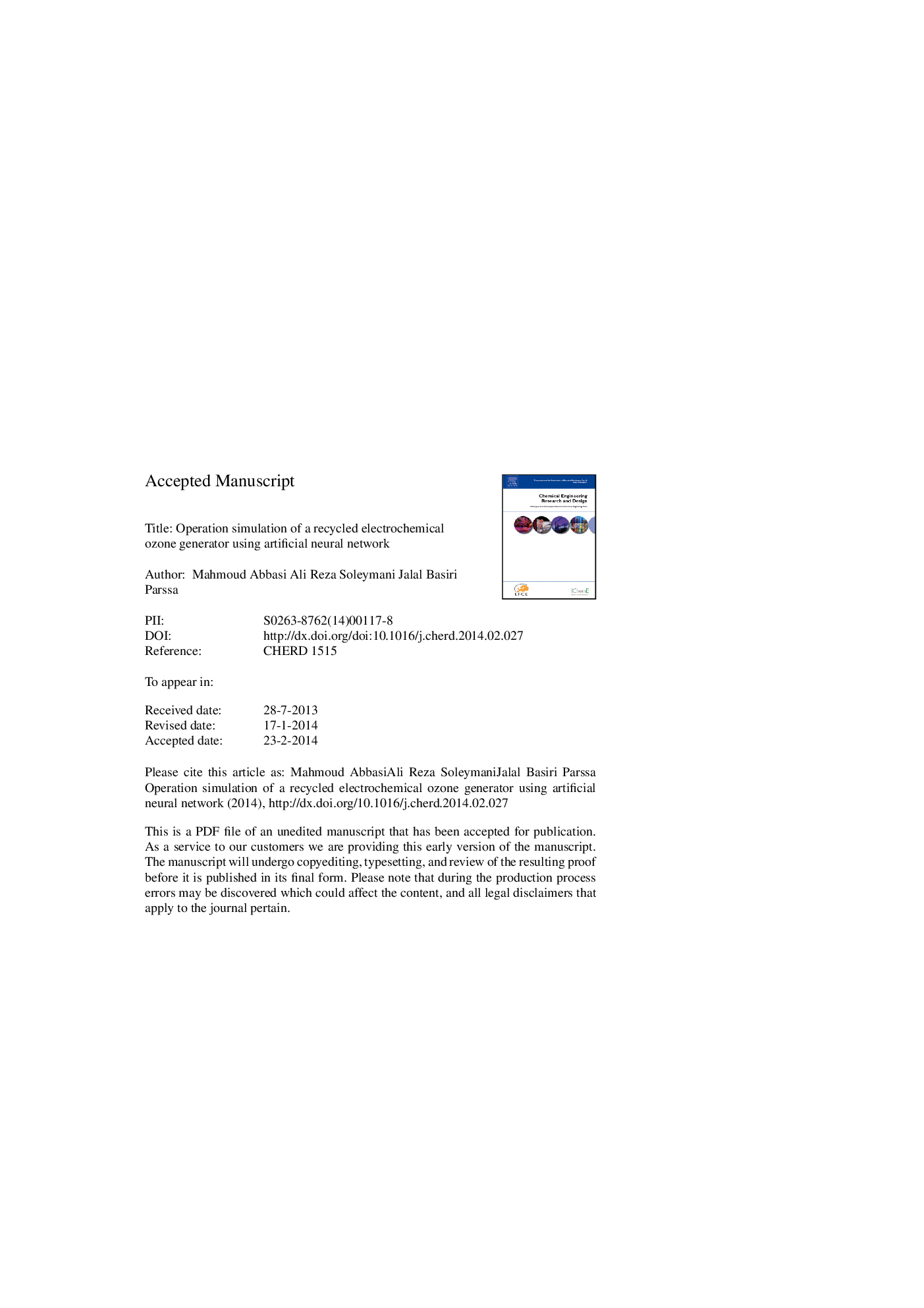| Article ID | Journal | Published Year | Pages | File Type |
|---|---|---|---|---|
| 10385080 | Chemical Engineering Research and Design | 2014 | 30 Pages |
Abstract
The present work has focused on the modeling and simulation of a recycled ozone generator system via electrochemical oxidation of water. To produce ozone, a Pyrex glass electrochemical reactor, comprised of two separate half-cell by Nafion 117 membrane was applied. The applied anode and cathode electrodes were Ti/Sn-Sb-Ni and platinized titanium, respectively. The modeling and simulation of the reactor operation were done via artificial neural network (ANN) technique. In this regard, four important operational parameters (i.e. electrolyte concentration, applied voltage, flow rate and electrolysis time) and the generated ozone concentration were considered as the independent inputs and the network output, respectively. To find out the best model, six numbers of three-layered ANNs with different functions were constructed and optimized. Best simulation was related to a model, consist of Levenberg-Marquardt Back propagation learning algorithm (trainlm) and tangent sigmoid (tansig) as transfer function in the both hidden and output layers. Also, application of 10 hidden neurons and 80 iterations for the network calibration caused to satisfy the network training while overfitting was prevented. The K-fold cross-validation method, employed for the model evaluation, showed high correlation coefficient (0.9936) and low mean square error (3.58 Ã 10â4) for the testing data. Sensitivity analysis indicated order of relative importance the operational parameters on the ozone production as: time > [electrolyte] > voltage > flow rate.
Related Topics
Physical Sciences and Engineering
Chemical Engineering
Filtration and Separation
Authors
Mahmoud Abbasi, Ali Reza Soleymani, Jalal Basiri Parssa,
